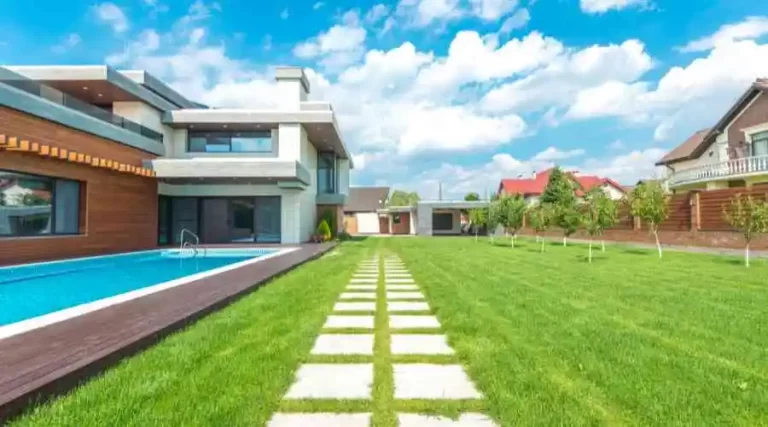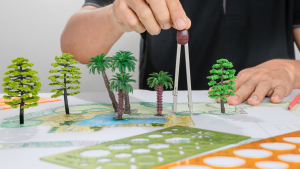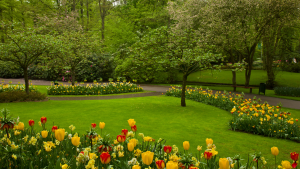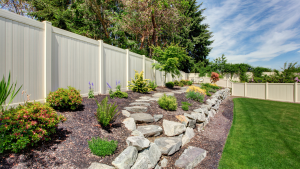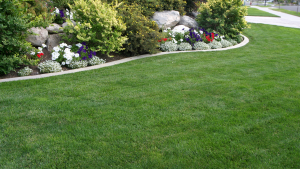Healthy plant growth depends on the soil in your yard or garden. But not all soil is created equal; in fact, distinct types of soil have unique mineral, organic, and inorganic matter compositions. What plants, trees, or bushes you may successfully grow will often depend on the type of soil in your garden or landscape. Chalk, clay, loam, peat, and sandy soil are the six main types of soil that you need to be familiar with in order to get the most out of your local soil. You can more effectively plan your landscape or garden in a way that complements your particular soil type by being aware of the features of each type of soil.
Chalk
Chalky soils can be difficult for some gardeners to work with because they are typically stonier and naturally more alkaline than the soils many plants enjoy. Also, it doesn’t hold water very well because chalky soil’s bigger granules allow for free drainage. Yellow leaves and sluggish or stunted growth may result from this. Try using humus or fertilizers made to adjust pH levels in your soil if you are finding these kinds of problems in your garden or landscape. Lilacs, weigela, spinach, sweet corn, and cabbage are some examples of plants that perform well in a calcareous soil that you could also want to add.
Clay
You should be familiar with clay soil as another form of soil. When wet, this soil type can feel lumpy and sticky, but when it dries up, it hardens into a rock. Despite the fact that clay soil might be nutrient-rich, it is heavy and difficult to work with. Also, it doesn’t drain well, which might make it difficult for water to get to your plants’ roots. Compost, manure, or finely chopped leaves can be mixed into the soil to help with drainage. Also, it’s crucial to select trees and plants that do well in clay soil. On clay soil, fruit trees, summer crops, and a variety of decorative shrubs flourish.
Related Topic: Assessing Soil for Optimum Growth Using Soil Analysis
Loam
The easiest way to describe loamy soil is as a combination of a few of the other types of soil, primarily clay, silt, and sand. Small grains and a possible little dampness are characteristics of loamy soils. Despite its propensity for acidity, loam is one of the best soils for growing the majority of garden and landscaping plants. But, loamy soil eventually has to be replaced with organic matter in order to maintain its moisture and ease of cultivation. To prevent the soil from becoming too exhausted, you may need to rotate your new plantings if you frequently plant the same vegetation in the same locations.
Peat
Peaty soil, as the name suggests, has a lot of peat in it. Peat is acidic because it is made of partially decomposed organic material or vegetation. It also has a propensity to retain a lot of water while holding fewer nutrients, which can make growing some trees and plants extremely difficult. By creating more drainage channels and adjusting the pH levels with lime, compost, or glacial rock dust, peat soils can be improved from their drawbacks. Rhododendrons, legumes, heather, and salad crops are examples of plants that typically thrive on peat soils.
Sandy
Gritty soil known as sandy soil has good drainage and dries out quickly. Sandy soils are often light and simple to work with, but they also have a tendency to not hold onto nutrients very well since the draining water frequently washes them away. Mulching can improve the ability of sandy soils to retain water, and kelp meal or organic fertilizer can help replenish the nutrients that plants require to grow. Also, choose trees and plants that thrive in sandy soils is a smart idea, such as hibiscus trees, squash, tomatoes, strawberries, and root vegetables.
Silt
Silt is composed of quartz particles that range in size from sand to clay. Silty soil is incredibly soft and almost soapy in texture due to these tiny grains. One of the easiest soils to work with, silty soil is particularly nutrient-rich and retains moisture quite well. Nevertheless, silty soil should be carefully monitored for drainage since it might get compacted. In silty soil, adding decomposed organic matter can aid in preserving good drainage. Dogwoods, willow, birch, and cypress are just a few of the trees that can be grown on silty soil since they enjoy the wetness. Every fruit or vegetable can grow well in silt as long as proper drainage is kept up.
Knowing the six various types of soil that could exist in your garden presently can help you identify it and make any necessary soil amendments. Do you have any experience with modifying soil? It entails examining the exact composition of your soil to determine how best to prepare it for growing. The good news is that Baton Rogue Landscape Pros can assist you with improving your soil and creating your best garden or landscape yet!

